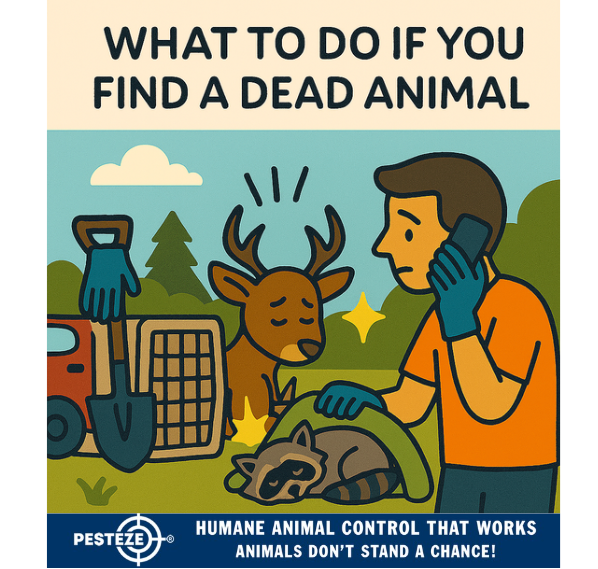WHAT TO DO IF YOU FIND A DEAD ANIMAL

WHAT TO DO IF YOU FIND A DEAD ANIMAL
SUMMARY
Finding a dead animal can be unsettling, whether it’s on your property, a roadside, or a public trail. Knowing how to respond safely and legally is essential for protecting your health and respecting wildlife protocols. This guide outlines the steps to take when you encounter a deceased animal, including how to report it, handle it properly, and prevent environmental or health risks. With the right approach, you can ensure a safe and respectful resolution.
FEATURES
-
Assess the Situation: Determine the location, species, and condition before taking action.
-
Avoid Direct Contact: Use gloves or tools to prevent exposure to disease or parasites.
-
Report to Authorities: Notify animal control, wildlife services, or local sanitation departments.
-
Follow Disposal Guidelines: Learn proper methods for removal based on local laws and species type.
-
Protect Pets and Children: Keep them away from the area to avoid contamination or emotional distress.
-
Document for Records: Take photos and note details if required for reporting or insurance purposes.
GUIDE DESCRIPTION
Encountering a dead animal is never pleasant, but your response can help protect public health and support wildlife monitoring efforts. Whether it’s a small bird in your yard or a large mammal on the roadside, this guide provides clear steps to follow.
Start by assessing the situation. Identify the species if possible and note its location. Is it on private property, public land, or near a roadway? These details will help determine who to contact and what actions are appropriate.
Avoid touching the animal directly. Use gloves, shovels, or other tools to inspect or move the body if necessary. Dead animals can carry diseases, parasites, or toxins that pose risks to humans and pets.
Report the finding to the appropriate authority. For domestic animals, contact local animal control. For wildlife, reach out to your state’s fish and wildlife agency or environmental health department. In urban areas, sanitation services may handle removal.
Disposal methods vary by location and species. In some cases, burial may be allowed on private property, while others require professional removal. Never dispose of a dead animal in public trash bins without checking local regulations.
Keep pets and children away from the area. Curious behavior can lead to contamination or emotional distress. Clean the surrounding area with disinfectant if the animal was found near your home.
If required, document the incident. Take photos and note the time, location, and any visible injuries. This information may be useful for authorities, insurance claims, or wildlife tracking.
By responding calmly and responsibly, you’ll help maintain public safety and contribute to ethical wildlife management.
- Amy Chang


Comments 0